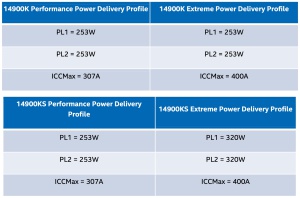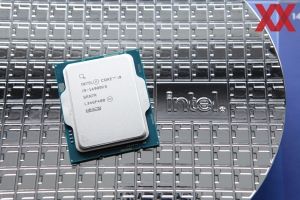Werbung
Eine längliche News, mehrere hundert Kommentare und Mainboardhersteller, die schon in den vergangenen Tagen BIOS-Updates veröffentlicht haben, die ein sogenanntes Baseline-Profil einführen. Nun scheint man bei Intel etwas aktiver geworden zu sein. In einem ersten Statement Anfang des Monats bestätigte man nur, dass man das Problem beobachte.
Nun geht man einen Schritt weiter und damit schließt sich der Kreis zu den Geschehnissen der vergangenen Tage. Inzwischen haben ASUS, MSI und Gigabyte entsprechende BIOS-Updates veröffentlicht, auf die Intel nun in einem Statement Bezug nimmt:
Intel has observed that this issue may be related to out of specification operating conditions resulting in sustained high voltage and frequency during periods of elevated heat. Analysis of affected processors shows some parts experience shifts in minimum operating voltages which may be related to operation outside of Intel® specified operating conditions.
- While the root cause has not yet been identified, Intel® has observed the majority of reports of this issue are from users with unlocked/overclock capable motherboards.
- Intel® has observed 600/700 Series chipset boards often set BIOS defaults to disable thermal and power delivery safeguards designed to limit processor exposure to sustained periods of high voltage and frequency, for example:
- • Disabling Current Excursion Protection (CEP)
- • Enabling the IccMax Unlimited bit
- • Disabling Thermal Velocity Boost (TVB) and/or Enhanced Thermal Velocity Boost (eTVB)
- • Additional settings which may increase the risk of system instability:
- • Disabling C-states
- • Using Windows Ultimate Performance mode
- • Increasing PL1 and PL2 beyond Intel® recommended limits
Intel® requests system and motherboard manufacturers to provide end users with a default BIOS profile that matches Intel® recommended settings.
- Intel® strongly recommends customer’s default BIOS settings should ensure operation within Intel’s recommended settings.
- In addition, Intel® strongly recommends motherboard manufacturers to implement warnings for end users alerting them to any unlocked or overclocking feature usage.
Intel® is continuing to actively investigate this issue to determine the root cause and will provide additional updates as relevant information becomes available.
Intel® will be publishing a public statement regarding issue status and Intel® recommended BIOS setting recommendations targeted for May 2024.
Im Grunde bestätigt Intel nur das Offensichtliche: Mainboard-Hersteller setzen die Standard-Einstellungen so, dass Vorgaben von Intel missachtet werden. Zudem weist Intel die Mainboardhersteller an, ein Default-Profil anzubieten, welches sich an die von Intel gemacht Vorgaben hält. Einige Hersteller haben dies nun mit dem Baseline-Profil getan. Somit ist wohl klar, dass die Hersteller in den vergangenen Tagen bereits proaktiv oder im Hintergrund durch Druck seitens Intel eben diese umgesetzt haben.
Ob die Hersteller sich in den Standard-Profilen an die Vorgaben halten oder nicht, sollten Besitzer eines Core-Prozessors der 13. und 14. Generation selbst untersuchen. In den Beta-Versionen verschiedener BIOS-Versionen ist es bereits vorgekommen, dass die Power-Limits zwar korrekt gesetzt wurden und meist stimmte das ICCmax, nicht immer wurden jedoch beispielsweise die Current Excursion Protection (CEP) aktiviert oder Thermal Velocity Boost (TVB), bzw. Enhanced Thermal Velocity Boost (eTVB) verhielt sich wie erwartet. Dies gilt es nun weiter zu untersuchen.
Im Mai will sich Intel mit einem detaillierten Statement und empfohlenen Einstellungen erneut an seine Nutzer wenden.


